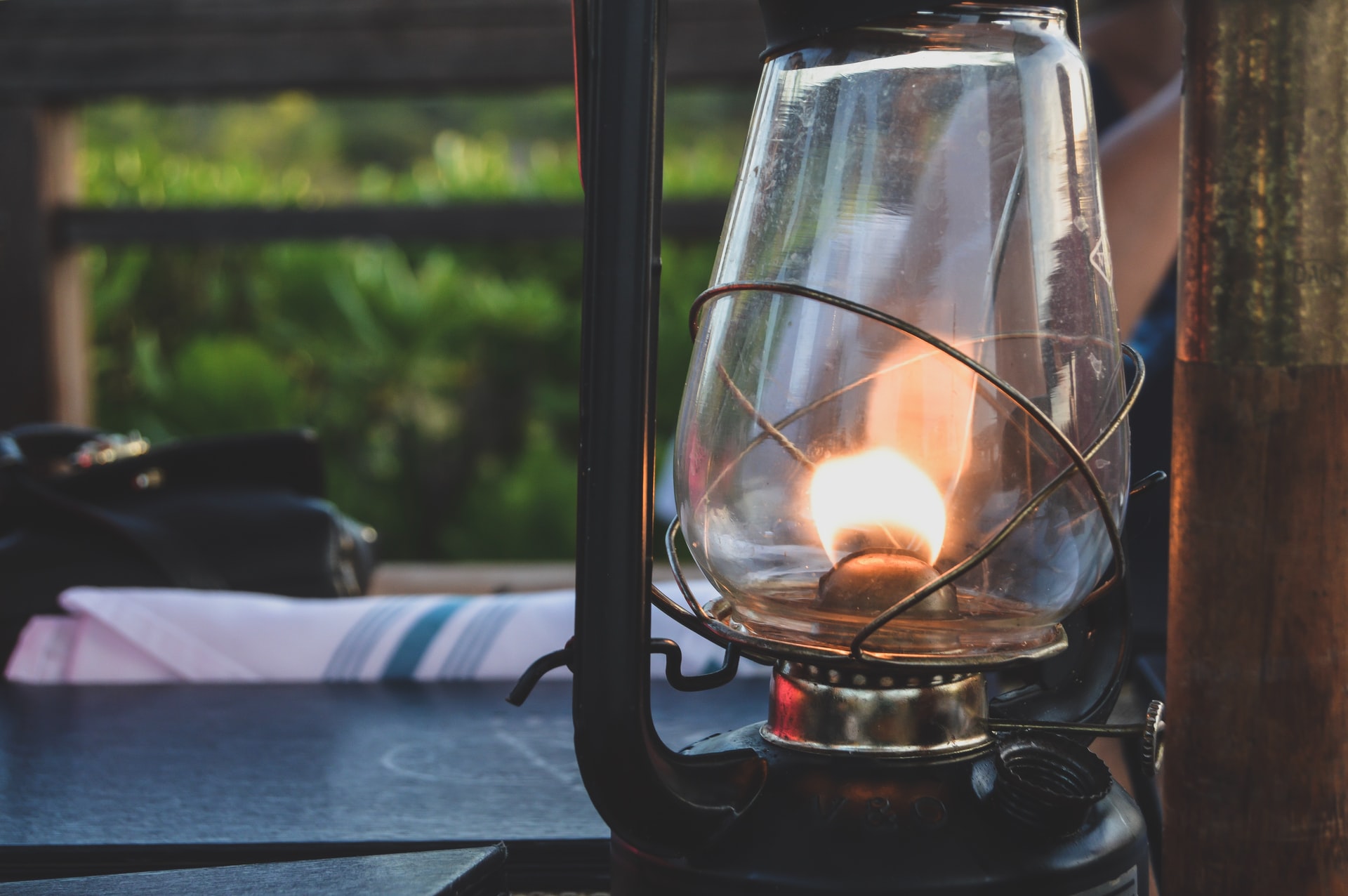BestHurricaneLantern is reader-supported. We may earn a commission through products purchased using links on this page. Learn more about our affiliate disclosure
Which is the better choice for a lantern, an oil lantern vs hurricane lantern? There are pros and cons to both options, so it can be difficult to decide.
In this blog post, we will compare the two types of lanterns and help you choose the best one for your needs.
Table of Contents
Why are they called hurricane lamps?
Hurricane lamps get their name because they were originally used by people living in hurricane prone areas to help them light their way during these dangerous storms.
These lamps are typically made from glass and have a wick that is soaked in oil or kerosene.
When the wick is lit, it provides a clear light that can easily be seen for many miles away. They also served as a good source of heat which helped protect people from the often very cold winds that come with hurricanes.
Today, hurricane lamps are mostly used for decorative purposes and can be found in many homes, businesses, and outdoor spaces.
People love their beautiful look and soft glow and often choose them to create a cozy atmosphere at night or set the mood when entertaining guests.
They are popular among musicians who use them on stage to help create a warm and inviting atmosphere.
Whether you’re looking for a decorative lamp or one that provides much-needed light during natural disasters, hurricane lamps are the perfect choice!
Can you use olive oil in a hurricane lantern?
No, you can’t use olive oil in a hurricane lantern. Olive oil is a very thick and viscous oil that doesn’t burn well when it is heated.
This means that the oil will not catch fire easily and may lead to problems with lighting the lantern. In addition, using olive oil in a hurricane lamp could cause damage to the glass or other parts of the lantern over time.
Instead of using olive oil, you should look for clean-burning lamp oils or paraffin waxes that are specifically designed for use in hurricane lamps.
These materials are intended for use with these types of lanterns and are made to be safe and effective when used properly.
If you need to light your hurricane lamp during an emergency, then using a clean-burning lamp oil or paraffin waxes is the safest option. You can find these products at most hardware stores or online retailers.
Overall, you should avoid using olive oil in a hurricane lantern due to safety concerns and issues with burning efficiency.
Instead, look for special oils or waxes specifically made for use in these types of lamps so that you can keep your home lit safely during an emergency.
What kind of oil do you use in a hurricane lamp?
There are many different types of oil that can be used in a hurricane lamp, but the most common type is kerosene.
Kerosene is a light petroleum product that is highly flammable and burns with a very bright flame.
It is important to use the correct type of oil in your hurricane lamp to ensure that it burns safely and efficiently.
How do you identify an oil lamp?
Oil lamps can be identified by their distinctive shape, the way that they are used to light a room or building, and how they are produced.
An oil lamp is also typically made of clay or glass and has a wick made of cloth that is lit using oil to fuel it.
Typically, an oil lamp will have a reservoir where the oil is kept and will also include some sort of handle so that it can be easily picked up and moved around by hand.
One common way to identify an oil lamp is by its shape. Oil lamps usually come in the form of either a rounded bowl or a slender vase shape.
This helps them to stand upright while emitting light from their flame, which may be either tall or thin depending on the particular design of the oil lamp.
In addition to their distinctive shapes, oil lamps are also often differentiated from other types of lighting objects by the way that they are used to light a room or building.
For example, an oil lamp is usually lit and then extinguished after use, whereas other types of lighting can either be left on all night or turned on and off with a switch.
In addition, people typically rely more heavily on oil lamps for indoor home lighting than they do other forms of light sources such as candles or lanterns.
Finally, one way to identify an oil lamp is by looking at its method of production. Because they were used so broadly in ancient times, there are many surviving examples of different styles and designs of oil lamps.
In general, however, most oil lamps are made from either clay or glass and have a wick that is lit using oil as fuel. This combination of materials and production method helps to give oil lamps their distinctive look and feel.
Read: Lantern vs torch
Oil lantern vs hurricane lantern: 3 Differences
One of the key differences between an oil lantern and a hurricane lantern is in their fuels.
An oil lantern uses either kerosene or lamp oil, while a hurricane lantern uses white gas.
This type of fuel is more volatile than the oil used in lamps, which means it burns hotter and has a longer burn time.
Another difference between these types of lamps lies in how they are lit and how long they last before needing to be refilled with fuel.
An oil lamp may need to be filled several times throughout its life, while a hurricane lantern typically only needs to be filled once per trip or outing, as it can burn for hours on just one load of fuel.
The size and construction of the two different types of lamps are also quite different.
An oil lantern is typically made up of a glass globe, wick and reservoir, while the hurricane lantern is comprised of a metal tank or shell with an opening in the top that holds a wick.
The wick sits in liquid fuel at the bottom of the lamp, allowing it to be lit easily by simply turning on an ignition switch or striking against flint.
If you are planning to use your lamp for camping trips or other outdoor activities that might involve harsh weather conditions, then a hurricane lantern is likely going to be your best choice.
Conclusion
Hurricane lamps are named as such because they were originally used to hurricane season. Today, you can use any oil in a hurricane lantern, but olive oil is a popular choice.
The three main differences between an oil lamp and a hurricane lantern are the shape of the chimney, the presence of a reflector, and the type of fuel used.
If you’re looking for an antique lamp to light your way, be sure to know the difference between these two types!

Hey! I’m James Miller, author of BestHurricaneLantern website. I’m an outdoor camping enthusiast and lantern is foremost thing every camper must know. I’ve started this blog few years ago to help you find out your Best Hurricane Lantern.

